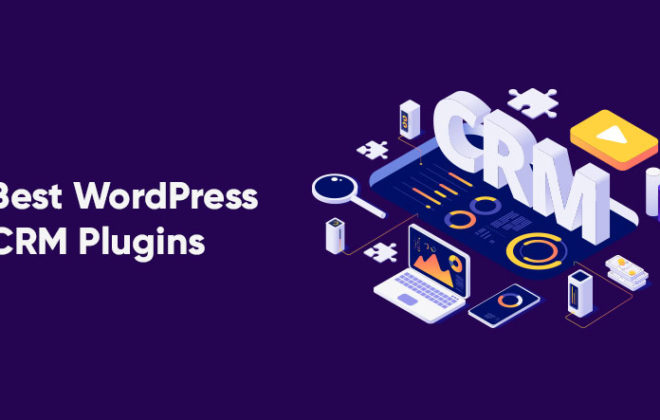10 Major Google’s SEO Updates Explained: The Only Guide You’ll Need (EVER)

Over the years, Google has evolved from just another search engine to the largest one!
Major Google’s SEO Updates
-
So what are Google SEO Updates?
- Panda
- Penguin
- Pirate
- EMD Update
- Hummingbird
- Pigeon
- RankBrain
- Possum
- Fred
With its related goals of providing the best user experience and rank only the most relevant pages on SERPs, Google has been rolling out SEO updates, that often confuse the users.
So what are Google SEO Updates?
Simply put, “SEO updates are action taken by Google to remove pages – already rankings on SERPs – which doesn’t comply with Google guidelines and improve the rankings of pages which do.”
Each of these SEO updates targets specific factors like poor content or backlinks, and sites which do not comply with Google’s guidelines get deranked or penalized. There’s no hard and fixed rule as to when Google will update the algorithm and no such timeline exist (it would’ve been so more comfortable if it did)
Based on observation, it seems that Google rolls out an update once or twice every month, but these are the ones we know about since Google officially and unofficially announced the rollout.
However, there are several unannounced and minor updates that keep happening from time to time. The one announced by Google happens to be the significant SEO updates which affect millions of pages every time and disrupt the SEO industry.
I’ve created this guide to talk about Google’s all ten major SEO Updates and explain them in an easy-to-digest format.
Let’s get started.
1. Panda
First seen around: Feb 2011
Target: Derank sites with poor-quality content
Google Panda is one of the most influential updates with the goal of removing sites with low-quality, duplicate, and spun content from the search results.
Even Neil Patel was affected after Panda update
It was rolled out on a monthly basis and with each update, pages with thin content got deranked. Although being in action since 2011, Panda wasn’t incorporated officially as an SEO update until 2016 when Google announced that it is now a significant algorithm update.
Google Panda update doesn’t affect individual pages or a particular section, but entire sites and you can observe a considerable drop in SERP rankings.
How to fight Google Panda?
- Get rid of duplicate pages
- Avoid targeting multiple pages with same or related keyword(s)
- Remove pages with little to no content
- Don’t use spun content generated through text spinners
- Create new and unique content which explains the topic
- Stay away from keyword stuffing
- Don’t rewrite articles from other sites
- Check for plagiarism and get rid of it ASAP
Tools to Use
- Grammarly and Hemingway Editor – To write better quality content
- Copyscape – Check for plagiarism
- SiteLiner – Find duplicate content on your site
2. Penguin
First seen around: April 2012
Target: Derank sites with low-quality and spammy backlinks
The next major SEO update is Penguin which was rolled out in early 2012 with the goal of removing sites with low-quality and spammy link profiles.
Penguin targets sites with unnatural, low-quality, non-relevant, and manipulative links generated using black or grey hat tactics. Other “not allowed” practices include buying links or using Private Blog Networks.
According to Google, Penguin has affected 3.1% of search queries in English and significant percentages in other languages like German, Arabic, and Chinese.
Also note that unlike Panda, Penguin operates in real time resulting in faster penalties and lower recovery time.
How to fight Google Penguin Update?
- Get rid of links from low-quality and spammy sites like directories
- Avoid buying links from sites that are created only for selling links (PBNs are a prime example)
- Do not create/get links from non-relevant niche sites
- Focus on getting links only from high-quality and authoritative sites
- Again, no paid links
- Give importance to quality of the link and not the quantity
- Maintain a proper text to anchor ratio of branded, naked, and keyword-targeted links
Tools to Use
- Google Disavow Tool – To disavow links
- SEMRush – Keep track of links pointing to your site and link audit
3. Pirate
First seen around: August 2012
Target: Derank sites with low-quality and spammy piracy related content and backlinks
As the name suggests, Pirate update deals with sites sharing copyrighted/pirated content (such as movies, music, e-books, and software) for free without proper license or authorization.
It mainly prevents sites flagged for copyright infringement (mainly through DMCA) from ranking high in SERPs.
Torrent, streaming, and crack software listings were most affected by this update. However, Google has not been able to completely resolve this issue as sites with torrent links emerge *literally* every day.
How to fight Google Pirate SEO Update?
- Remove all pirated content from your site
- Resolve all copyright infringement notices ASAP
- Don’t share any content without proper permission from the owner/creator
4. EMD Update
First seen around: September 2012
Target: Reduce low-quality ‘exact-match’ domains in search results
EMD (Exact Match Domain) technique was a big hit a few years ago on grey-hat (and black-hat) circles. It was easy to buy a domain with matching target keywords in the name, throw some content and backlinks, and get ranked on the first page for the keywords.
This tactic was heavily misused to the extent that Google had to launch a dedicated update to fight it. The goal was to filter out “low-quality” sites with spammy content with an exact match in the domain name. However, the update didn’t affect all the EMD sites. In fact, sites with higher quality content recovered top rankings, and only those with no “real-value” were filtered out.
Matt Cutts tweeted about EMD update by saying “EMD update will reduce low-quality ‘exact-match’ domains in search results.”
How to fight EMD Update?
- If possible, do not use exact-match domains
- Add general “filler” words either at the beginning or end of the domain; For example, instead of buying bestrunningmachine.com buy myrunningmachine.com
- Improve the content quality and user experience of your EDM sites
5. Hummingbird
First seen around: August 2013
Target: Improve search results based on searcher’s intent
Google’s Hummingbird update is more targeted towards improving search results than penalizing sites. This update helps Google better understand the intent behind a query and provide the most-suitable results.
Once the update went live, pages with enough relevant information for a specific query could still rank even though they are not an “ exact” match for the targeted keywords. With the help of synonyms, LSI (Latent Semantic Indexing), and past search history, Google now has a better understanding of the expectations behind queries.
This update also filters out results that rely only on keyword-stuffing and targeting exact-match keywords for ranking.
How to fight Hummingbird Update?
- Do not optimize pages for a single keyword
- Use LSI keywords and related terms
- Expand your keyword research
- Shift your focus on explaining the topic
Tools to Use
- Google Auto-suggest and Related Search – To find co-occurring and LSI terms
- KWFinder – For keyword research
- Keyword Planner – Keyword research + related terms to target
6. Pigeon
First seen around: July 2014
Target: Provide high-quality local search results
Queries, where user’s location plays an important role, are targeted by Pigeon update. It ties local search algorithms and core SERP algorithms with the traditional SEO factors to rank local search results.
According to Google, Pigeon update lead to almost 50% decline in some SERP positions, improved the ranking of local directories and affected results in Google Maps search. Pigeon update is highly beneficial for local businesses as it is given an edge to small businesses over the chain based geographically dispersed entities.
How to fight Pigeon Update?
- Correctly set up your Google My Business page
- Provide consistent NAP data (Name, Address, and Phone number)
- Optimize your pages for location (Example – “Bathroom Fitter London”)
- Get featured in local directories
7. Mobile-friendly Update
First seen around: April 2015
Target: Rank sites with mobile-friendly layout higher and de-rank non-responsive pages
Around 2015, Google released a mobile-friendly update (aka Mobilegeddon) to increase the ranking of mobile-optimized and fast loading pages.
It also meant that pages which took ages to load (on a slow internet) and non-responsive design were down-ranked. However, it doesn’t affect Desktop searches in any way. Eventually, it has become a significant ranking signal, and developers have started creating themes that are responsive and optimized for speed.
How to fight Google Mobile-friendly Update?
- Make your website’s design responsive
- Focus on speed and usability of the site
Tools to Use
- Google PageSpeed Test – Check your mobile site score
- Website Auditor – Page level testing of your site
- Pingdom – Overall speed test
8. RankBrain
First seen around: October 2015
Target: Use Machine Learning and Artificial Intelligence for better search results
Google’s RankBrain is an extension of Hummingbird update and utilizes Machine Learning to better interpret queries and provide the best-matching search results.
With the help of RankBrain, Google now has a better understanding of the intent, and somehow it can summarize and teach itself about entire sites. Moreover, it improves itself over time without human intervention.
While announcing RankBrain, Google also mentioned that it’s the third most crucial ranking factor. Brian Dean from Backlinko has explained RankBrain with the help of the following visual:
How to fight RankBrain Update?
- Improve User Experience
- Optimize your pages for relevancy and comprehensiveness
- Diversify your content and add more points
9. Possum
First seen around: September 2016
Target: Deliver location based search results
Possum update is yet another attempt by Google to provide best-matching results based on the location of the query.
It ensures that the results vary depending on the location of the user and that same results do not appear to all users. You’re more likely to see a business in your searches if you’re close to its physical address.
As opposed to Pigeon update, we observed that Possum gives boost to businesses located outside a physical city area (which wasn’t the case with Pigeon which favor businesses located in the same city). Another essential thing noticed was that Possum gives a different result for similar looking queries; “laptop repair London” and “laptop repair in London” resulted in different results.
How to fight Possum Update?
- Try not to share your physical address with another business
- Expand your keyword research and target more variation of similar-looking queries
- Perform geo-specific rank tracking
- Provide consistent NAP detail
10. Fred
First seen around: March 2017
Target: Remove pages that focus only on generating affiliate and ad revenue
The latest confirmed SEO update by Google is named ‘Fred,’ a name suggested by Google’s Gary Illyes who jokingly suggested that all updates be named Fred.
However, no specifics about this update have been announced by Google. However, as with all suspected updates, it is a given that sites which do not follow the guidelines will be affected.
After an analysis of affected sites, we observed that majority of the “hit” sites were content driven sites with low-quality articles on a variety of topics and the sole intention of generating ad or affiliate revenue. We also discovered that the number of ads on pages was higher than the industry-recommended average and the content was thin and affiliate-heavy.
How to fight Fred Update?
- Since this update mainly deals with content-heavy sites, the first step should be to improve quality of the content.
- Reduce the number of ads and provide better readability
- Remove thin pages and add more in-depth content
- Do not add tons of affiliate links on pages
- Try to balance content to ads and/or content to affiliate links ratio
Now that you know about all ten major SEO updates, the next big question is how to keep track of the updates.
If you’ve observed a drop in ranking, you should check if Google has released any new SEO update. Next, visit the following places that try to keep track of latest Google algorithm updates:
- Google Inside Search
- Webmaster World
- Moz – Google Algorithm Change History
- SearchEngineJournal – History of Google Algorithm
- SEMRush Sensor
Final Words
I have discussed the major SEO updates, what they target, and how to save your site from penalties. And hopefully, you’ll be able to rank your website higher on SERPs (or at least maintain your current positions)
I would love to know your thoughts and answer your question in the comment section below. Also, if any Google update has ever hit you, let us know how you managed to tackle it.
As always, if the article helped you, we’ll appreciate a share or a tweet.

Create Faster WordPress Websites!
Free eBook on WordPress Performance right in your inbox.










